Stiff Upper Lips
0October 28, 2014 by Lydia Syson
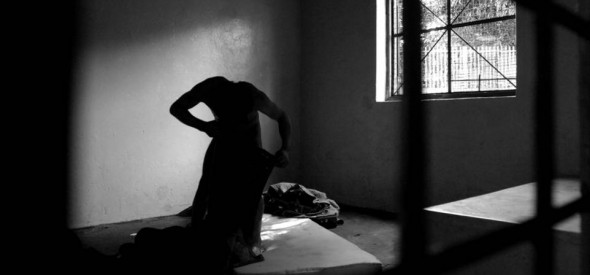
A few days ago, a new opera called Shell Shock premiered in Brussels, just one of the huge number of commemorative events marking the anniversary of the outbreak of the First World War. Works of art such as Pat Barker’s mesmerising Regeneration trilogy have already made a huge contribution to our understanding of shell shock, though sadly, not enough to ensure we are dealing with it effectively today. ‘You don’t ever get over it’ was the headline of a disturbing article in last week’s Guardian about the treatment – or non-treatment – of combat stress today, through interviews with British soldiers who have served in Afghanistan, Iraq and Northern Ireland. Names change – in the 19th century it was known as ‘soldier’s heart‘ – but symptoms and effects remain constant and devastating.
For That Burning Summer, I needed to find out exactly what would have happened during the Second World War to a pilot who who ‘lost his nerve’, as Henryk does after bailing out of his burning Hurricane. It was surprisingly hard to work out. Records of psychiatric casualties in the RAF during World War Two are frustratingly elusive. But I quickly discovered that the label ‘LMF’ or ‘Lack of Moral Fibre’ was a horrifying threat which hung over all airmen until late 1945. (In That Burning Summer, Peggy’s young brother Ernest becomes obsessed with it, fearing it might apply to him and his pacifist father.) Unofficially, the accusation of ‘LMF’ has been bandied around ever since.
It’s a peculiarly British term, hastily introduced by senior officers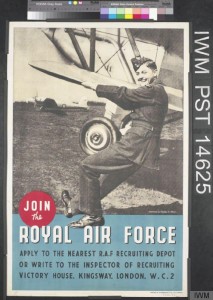 in April 1940 because the RAF badly needed a deterrent for aircrew who were becoming (understandably) reluctant to fly. This was a point in the war when maintaining morale was a key part of British strategy: stiff upper lips were needed to save the day. Flying stress, aeroneurosis and aviators’ neurasthenia had all been recognised as real conditions before the war, with symptoms similar to shell shock. But as Britain faced invasion, there was a fear that if doctors diagnosed too many airmen with these disorders, the result might be a mass exodus from an already short-staffed airforce, and sufferers would be entitled to a pension.
in April 1940 because the RAF badly needed a deterrent for aircrew who were becoming (understandably) reluctant to fly. This was a point in the war when maintaining morale was a key part of British strategy: stiff upper lips were needed to save the day. Flying stress, aeroneurosis and aviators’ neurasthenia had all been recognised as real conditions before the war, with symptoms similar to shell shock. But as Britain faced invasion, there was a fear that if doctors diagnosed too many airmen with these disorders, the result might be a mass exodus from an already short-staffed airforce, and sufferers would be entitled to a pension.
So they came up with LMF – not a diagnosis of a medical condition, but the very opposite. It was used as a form of intimidation. Men with LMF were effectively branded as cowards, and their treatment was designed to humiliate and stigmatise: pilots were stripped of their rank, and even paraded in public in their badgeless uniforms. ‘Firm treatment’ indeed. Most airmen preferred to risk the odds they faced in the air, however desperate. (In Bomber Command, you had a 67% chance of being killed on your first tour of duty, and 84% on your second.)
Breakdown rates were highest – or perhaps most obvious – in Bomber Command, where the problem was seen as ‘dangerously contagious’. However, there was a great deal of confusion about LMF among those in charge of psychological warfare, as the Flying Personnel Research Committee (FPRC) itself admitted in 1942. Some doctors recognised that flying stress built up over time, and that everybody had a ‘breaking point’. Yet no official distinction was made between a crisis of confidence during a training flight, and a collapse of nerve after an airmen’s twentieth sortie. And while there was huge concern about the supposedly infectious nature of LMF, most medics illogically agreed that men who broke down under the stress of flying in battle were ‘constitutionally timid’: their characters were at fault. This weakness was blamed on their genes or their family background. Social class was clearly perceived as a factor, if only by implication.
Search the RAF website today, and you’ll find no mention of LMF. Although it was quickly abandoned as official terminology after the war, it remains a controversial and politically sensitive subject.
L.M.F. Case
“You wished to see me
For personal reasons?”
I waited and scanned his face,
Searching for a clue.
“I am sorry to bother you …”
His anguish gave pause,
Then stumbled on ….
“I can’t continue with the course …”
He made his declaration –
The affirmation of his fear …
“I cannot fly ….”
“Cannot fly … ” I queried .. “Why ?”
But knew the answer ….
“Because I am afraid …”
He spoke the simple fearful words ….
The Truth that most men lie.
Confused, I sat in silence,
Weighing up the cruel alternatives.
“How many hours have you flown ?”
“Twelve …”
“Pity you didn’t come to me before …”
The pity was with him.
His eyes searched mine in hope.
Rather than betray, I looked away ….
“If you had decided on this course last week,
You could have withdrawn.
Unfit for further training …”
“And now … ?” he choked on his words.
“I can only refer the matter
To the Chief Instructor.”
He looked beyond me
To the shame that lay ahead ….
“I kept telling myself
That I would get used to it …”
He quietly said.
“But each time I flew,
I froze with fear …”
“I’ll do my best …”
I lamely volunteer.
“Clear case …” the C.I.
Gave the lead.
The M.O. and the Padre both agreed.
It was agreed ….
Confirmed by all on high.
Stripped of his rank …
Cashiered ….
Disgraced ….
‘Refused to fly.’
This poem by George Cocker, who joined the RAF in 1939 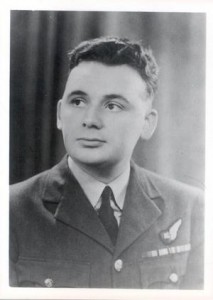 at the age of 18, is one of a number he contributed to WW2 People’s War, an online archive of wartime memories collected from members of the public by the BBC. Cocker’s poetry often uses dialogue to convey the yawning gap between the official language of air warfare and the actual experience of individuals taking part. Several were anthologised by the Salamander Oasis Trust, an organisation which came out of a group of poets who served in Cairo during the war, and published their first selection of wartime poetry there in 1943. As the Trust website says: ‘it was the desert war in North Africa that first inspired many of the poets of World War II. Later the poetry of the Second World War would be written in battle areas all over the world from EI Alamein to Burma, and from the beaches of Normandy to the islands of the Pacific. It was written by men holding every kind of rank in the three services, many of whom had never written a word in their l
at the age of 18, is one of a number he contributed to WW2 People’s War, an online archive of wartime memories collected from members of the public by the BBC. Cocker’s poetry often uses dialogue to convey the yawning gap between the official language of air warfare and the actual experience of individuals taking part. Several were anthologised by the Salamander Oasis Trust, an organisation which came out of a group of poets who served in Cairo during the war, and published their first selection of wartime poetry there in 1943. As the Trust website says: ‘it was the desert war in North Africa that first inspired many of the poets of World War II. Later the poetry of the Second World War would be written in battle areas all over the world from EI Alamein to Burma, and from the beaches of Normandy to the islands of the Pacific. It was written by men holding every kind of rank in the three services, many of whom had never written a word in their l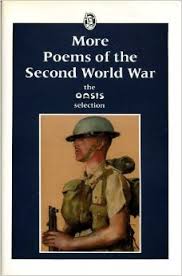 ives before. And not only were men writing poetry about the war, but members of the three women’s services were contributing as well. After the war, the Salamander Oasis Trust was set up to collect, edit and publish not only the original Cairo poems but selections from all the other poetry written during the Second World War. The one requirement was that it had all been written at the time or soon after by people serving in the Forces between 1939-1945 or, in the case of the Balkans, 1946.’
ives before. And not only were men writing poetry about the war, but members of the three women’s services were contributing as well. After the war, the Salamander Oasis Trust was set up to collect, edit and publish not only the original Cairo poems but selections from all the other poetry written during the Second World War. The one requirement was that it had all been written at the time or soon after by people serving in the Forces between 1939-1945 or, in the case of the Balkans, 1946.’
Further reading on Lack of Moral Fibre/Flying Fatigue
Jonathan Croall: Don’t You Know There’s A War On: Voices from the Home Front(Hutchinson 1988)
Allan D. English: A Predisposition to Cowardice? Aviation Psychology and the Genesis of ‘Lack of Moral Fibre [Source: War & Society, Volume 13, Number 1, May 1995 , pp. 15-34(20)]
Ben Shepherd: A War of Nerves: Soldiers and Psychiatrists, 1914-1994 (Pimlico, 2002)
C. P. Symonds, ‘The Human Response to Flying Stress: Lecture 1: Neurosis in Flying Personnel‘, The British Medical Journal, Vol. 2, No. 4326 (Dec. 4, 1943), pp. 703-706
Patrick Bishop, Bomber Boys (Harper Perennial, 2008) – chapter 13 ‘Crack Up’
Joanna Bourke: Fear – a Cultural History (Virago 2005)
(And I also thoroughly recommend this excellent review of an earlier book by Bourke and its relationship to Pat Barker’s Regeneration trilogy by shell shock historian Dr Tracey Loughran which has very interesting things to say about the relationship between the work of historians and historical novelists…)
Several stories collected by the BBC for the ‘WW2 People’s War online archive’ make reference to LMF: ‘An Airman’s Son’ is a particularly moving memoir, which illustrates the difficulties for both historians and family members in piecing together what actually happened in these situations during that time.
More background reading for That Burning Summer can be found here.
The RAF wings pictured belonged to Pilot Officer Frederick Harrold, who was killed in action during the Battle of Britain. Harrold, of Hills Road, Cambridge, was killed on Saturday, 28th September over Deal, Kent, having only just been posted to 501 Squadron two days previously. This image, and the RAF recruitment poster, are available to share and reuse under the terms of the IWM Non Commercial Licence.
Category News | Tags: aeroneurosis, Bomber Command, Combat Stress, Flying Personnel Research Committee, flying stress, George Cocker, Joana Bourke, La Monnaie, Lack of Moral Fibre, LMF, morale, neurasthenia, opera, RAF, Salamander Oasis, Shell shock, soldier's heart, That Burning Summer, WW2

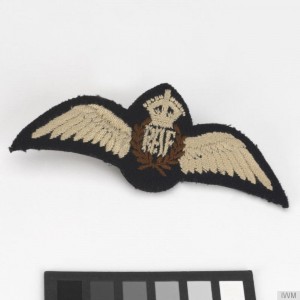

Leave a Reply